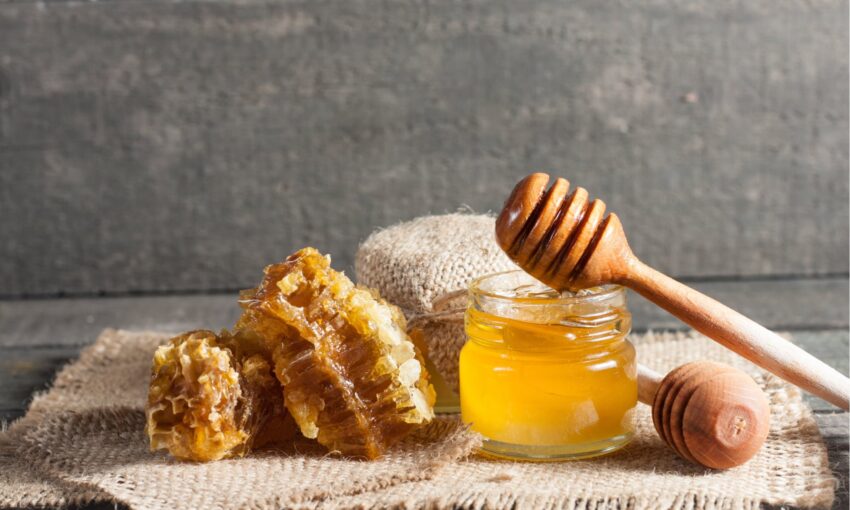Australian honey is renowned for its high nutritional value. It contains various vitamins, minerals, and antioxidants that provide numerous health benefits. On average, one tablespoon of honey contains around 64 calories and is composed of 17% water along with other constituents like carbohydrates, proteins, and trace elements.
The main sugars in honey are fructose and glucose which account for about 95% of its composition. This makes honey very sweet and a good source of energy. Honey also contains a small amount of other sugars like maltose and sucrose. Besides sugars, honey contains various B-complex vitamins including riboflavin, niacin, pantothenic acid, and pyridoxine. It also contains minerals like calcium, copper, iron, magnesium, manganese, phosphorus, potassium, and zinc in trace amounts.
Honey is an excellent source of antioxidants. The primary antioxidants in honey are phenolic compounds like flavonoids and phenolic acids. These phytochemicals have potent anti-inflammatory and antibacterial properties. The antioxidant content of honey depends greatly on the type of flowers visited by the bees producing it. Australian floral sources like eucalyptus, banksia, and leatherwood trees impart honey with high antioxidant levels.
Unique Flavor Profile Of Australian Honey
The unique flavor of Australian honey is attributed to the wide variety of plant sources available across the diverse landscapes of the country. Some of the prominent floral varieties producing distinct honey types include:
– Eucalyptus honey: Sourced from eucalyptus trees which are abundant in the forests of Australia. It has a strong, floral aroma with subtle medicinal notes.
– Leatherwood honey: Obtained from the nectar of the leatherwood tree which blooms in Tasmania. Regarded as one of the finest honeys, it has a creamy texture with hints ofspice.
– Stringy bark honey: Derived from the nectar of stringybark trees. It has a mild flavor with undertones of flowers and wood.
– Banksia honey: Collected from the endemic banksia flowers. It has a lighter flavor with nuances of citrus.
– Jarrah honey: Sourced from the nectar of jarrah trees found in Western Australia. Features a robust flavor with smoky notes.
The diversity in floral sources allows Australia Honey to showcase an incredible range of flavors from mild and floral to bold and robust. This makes it a favorite in cuisine and bakery applications worldwide.
Health Benefits Of Australian Honey
Some key health benefits of regular consumption of Australian honey include:
Antibacterial Effects: Honey has natural antibacterial properties primarily due to its low pH and hydrogen peroxide content. Consuming honey can help support digestive and immune health.
Antioxidant Protection: The high antioxidant levels in various Australian honey varieties protect cells from free radical damage and reduce inflammation. This may reduce risks of chronic diseases.
Immune Boosting: Honey contains certain compounds like zinc, iron, and vitamins that help strengthen immunity. It can help ward off illnesses like common cold and flu.
Energy Source: Honey gives sustained energy since its natural sugars like glucose are released gradually into the bloodstream. This makes honey a healthier alternative to refined sugars.
Wound Healing: Honey can help heal minor wounds and burns faster due to its antibacterial and humectant properties. Its regular application on cuts prevents infections.
Heart Health: Honey may aid heart health by lowering blood pressure and cholesterol levels through antioxidants. It also provides energy without negative calories like refined sugars.
So Australian honey can work wonders in boosting overall wellness and preventing various ailments due to its unique nutritional profile and bioactive compounds.
Ways To Use Australian Honey
Here are some popular ways to incorporate nutrient-dense Australia Honey into one’s diet:
– Drizzle raw honey over whole-grain cereals, fruit salads, cheese boards or oatmeal.
– Stir honey into herbal tea for an antioxidant boost.
– Mix honey into homemade granolas and mueslis for an energizing breakfast.
– Use mild flavored honeys like banksia or stringy bark in baking items like bread, muffins, cakes and cookies.
– Whip honey into natural yogurt or cottage cheese for a sweet snack.
– Blend honey into smoothies and protein shakes.
– Add honey to marinades and glazes for meats.
– Enjoy robust honeys like eucalyptus or leatherwood with cheese or on toast.
– Sweeten homemade warm beverages like milk or turmeric lattes with honey.
Australian honey has versatile culinary uses due to its diverse flavors and nutrition. Incorporating just one tablespoon a day can reap significant health rewards.
*Note:
1. Source: Coherent Market Insights, Public sources, Desk research
2. We have leveraged AI tools to mine information and compile it

